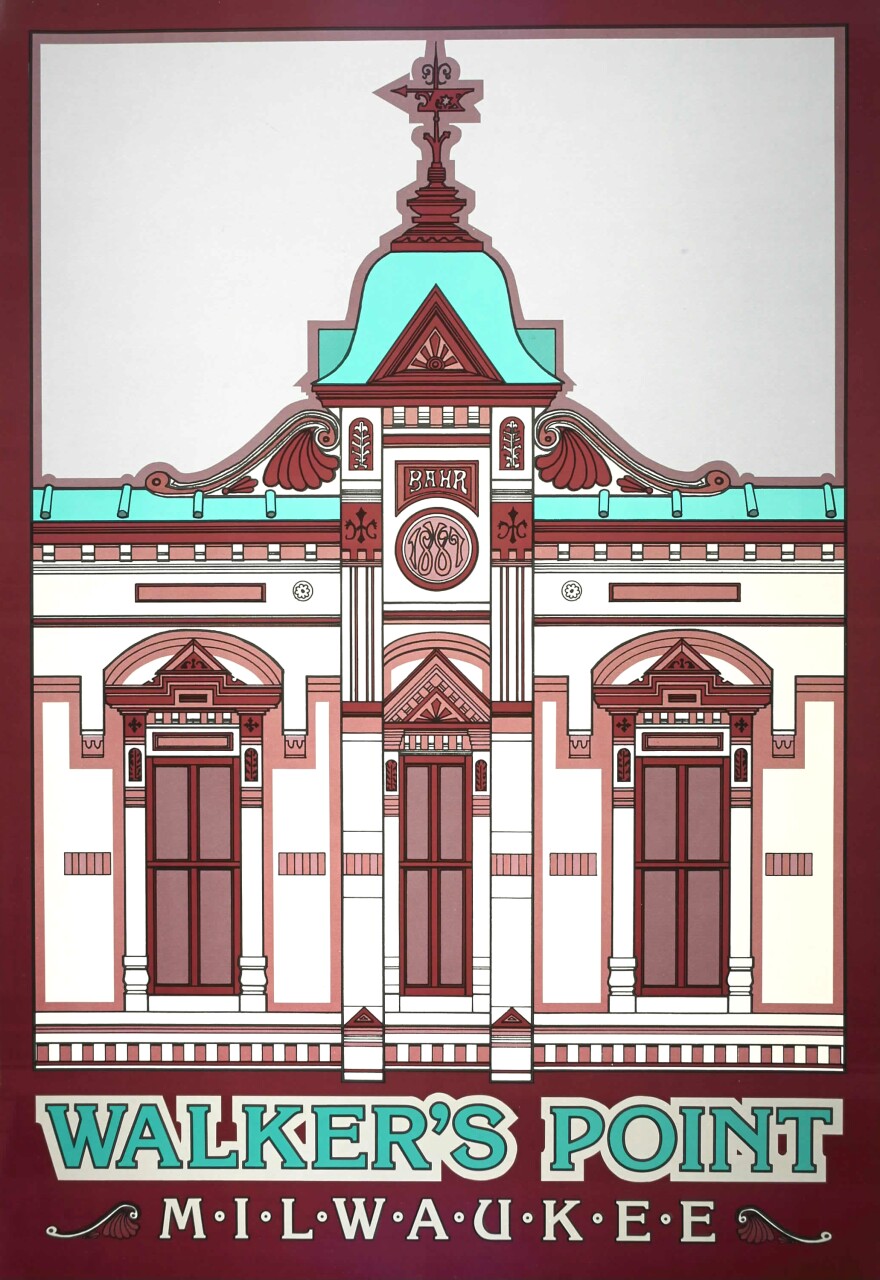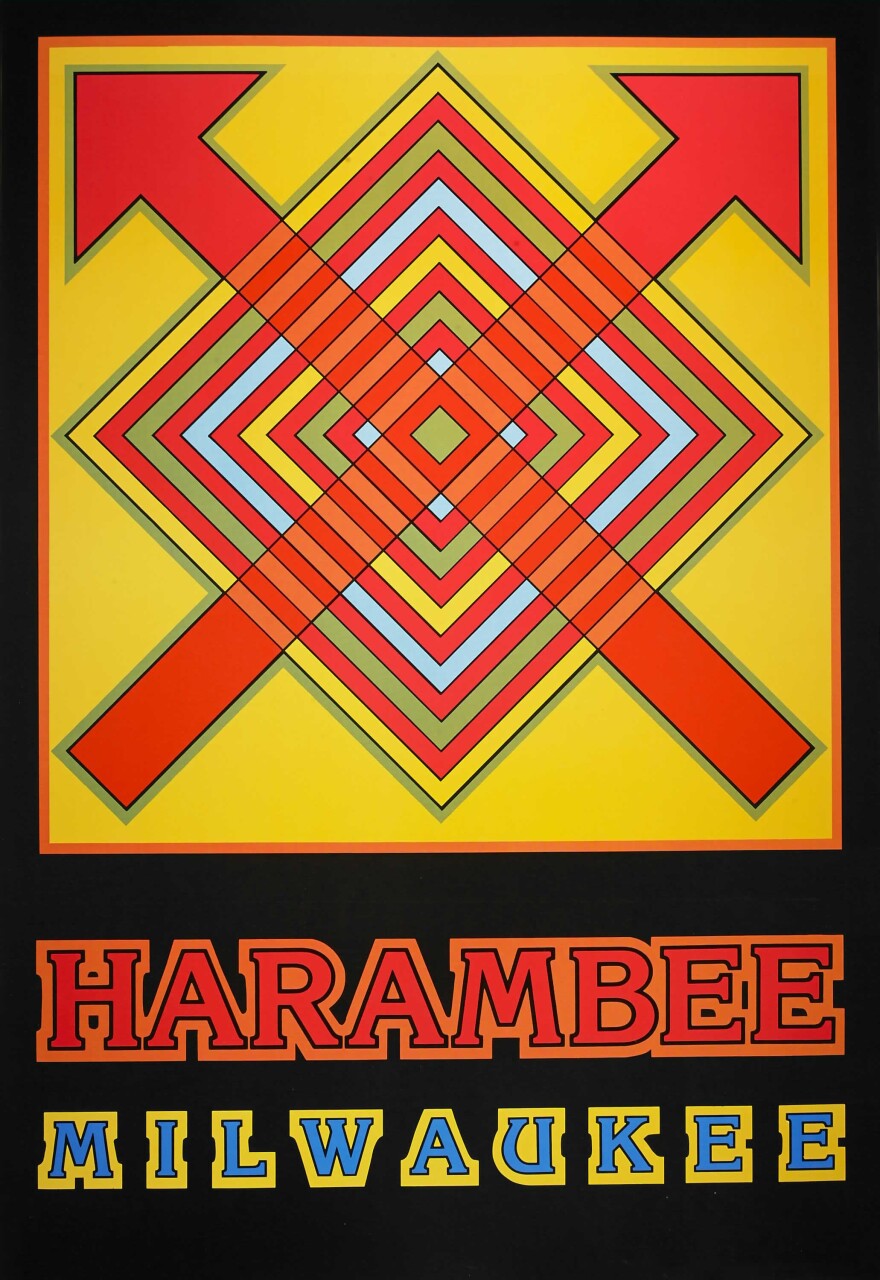The City of Milwaukee has dozens of neighborhoods. Each with its own distinct name. And if you’re like Glenda Puhek, you may have wondered how those names came to be.
Glenda was born in the city and currently lives in Riverwest — a neighborhood name she thoroughly understands. It is, after all, west of the river. When revisiting some of the Milwaukee neighborhood posters created by the city in '80s, she started wondering about who decided what should be included on them? Who really defines Milwaukee's neighborhoods?
To find out the answer, Glenda reached out to WUWM's Bubbler Talk and asked:
When did the city start naming neighborhoods, and why? And how did they pick the names?

"Did that happen organically?" she wonders. "Did, like, one group of people say, ‘Oh you know, we want to be known as this because that gives us identity,’ or did the city have a campaign and say, ‘Gee, let’s go name neighborhoods and let people figure that out.'"
So, we met up in Walker's Point to speak with the expert on all things Milwaukee history: John Gurda.
Gurda's book, "Milwaukee: City of Neighborhoods," answers Glenda in a lot of different ways, and features the neighborhood posters that partly inspired her inquiry.
Gurda points out a fundamental fact about Milwaukee neighborhoods — they're not defined by any government entity.
"Milwaukee does not have any official designation as Minneapolis does, as Chicago does. A lot of cities don’t, some do," Gurda says.

There have been attempts to create an official city neighborhood map, Gurda says. But city cartographers never succeeded — partly, he contends, because they tried to include too much. "They ended up with around 200 neighborhoods. Every square inch was something, and you’re gonna put some round pegs in square holes if you try that," he explains.
Two hundred neighborhoods. For a city that’s less than 100 square miles, that means two neighborhoods to every square mile. And that number might be right, but it’s hard to say.
Without an official designation from the city, neighborhood names are cultivated and circulated by everyday people.
Which gets back to Glenda’s initial question — how neighborhoods are named. It’s a tough question to answer, because there are a lot of different answers.

Three neighborhoods are named for the founders of Milwaukee and its three original settlements: Kilbourn Town, Juneau Town and Walker's Point. But Gurda says the only one that has really stood the test of time is Walker's Point. Unlike Kilbourn and Juneau Town, where the building stock has been torn down and rebuilt many times over, Walker's Point has remained relatively unchanged.
Gurda says Walker's Point is "without a doubt" the oldest neighborhood in Milwaukee. "A lot of the buildings in Walker's Point are the first ones here. So this area's been called the last, relatively intact 19th century neighborhood in Milwaukee," he explains.
There are other old neighborhoods such as Piggsville, an isolated neighborhood near the center of the city, which has its own fascinating origin story that Gurda explores in the audio below:

Others neighborhood names are less mysterious and more a reflection of former, official designations. Take the Historic Third Ward for example. It was previously called "The Bloody Third," a name that hearkens back to a time when the city was divided into different wards.
That brings up another point: The broad use of these neighborhood names is a relatively recent development. Gurda notes that in previous generations, people referred to the ward they lived in, not their neighborhood.
"More often than not, people would talk about what ward they were from," he explains. "So my grandmother from the south side, she was from the Fourteenth Ward, which was the Polish section of town. The Sixth Ward was the near-north side, Third Ward was the Irish neighborhood then the Italian neighborhood. So, those became kind of names, and the Third Ward has survived as a name, the others are gone."
While some neighborhoods have names that reflect their history, others were created as a marketing tool or a way of uniting the community. Gurda says this became common in the early '70s.

"The biggest boom in neighborhood names would have been after the ‘60s. That’s when you would have had the real proliferation of people trying to say, ‘This is my turf, this is my territory. We’re gonna name it, we’re gonna claim it,'" he says.
Brewer’s Hill, for example, was named for its proximity to the Schlitz Brewery. Harambee, which is the Swahili word for “pulling together,” is an indication of the neighborhood's African-American population and the push to redefine the neighborhood in the ‘70s.
There are as many origin stories as there are neighborhoods in the City of Milwaukee, but one thing to keep in mind is that none of the neighborhoods or names are static. They’re constantly moving boundaries and evolving to reflect the people and places they represent.
"I’ve talked about neighborhoods as quicksilver creations because you really can’t put your finger on them. They’re always kind of in motion," says Gurda.
Right now, there are new neighborhoods being formed. Gurda points to the new Harbor District as one such example. And for the neighborhoods of tomorrow’s Milwaukee, those are yet to be decided and named.
Have a question you'd like WUWM to answer? Submit your query below.
_







